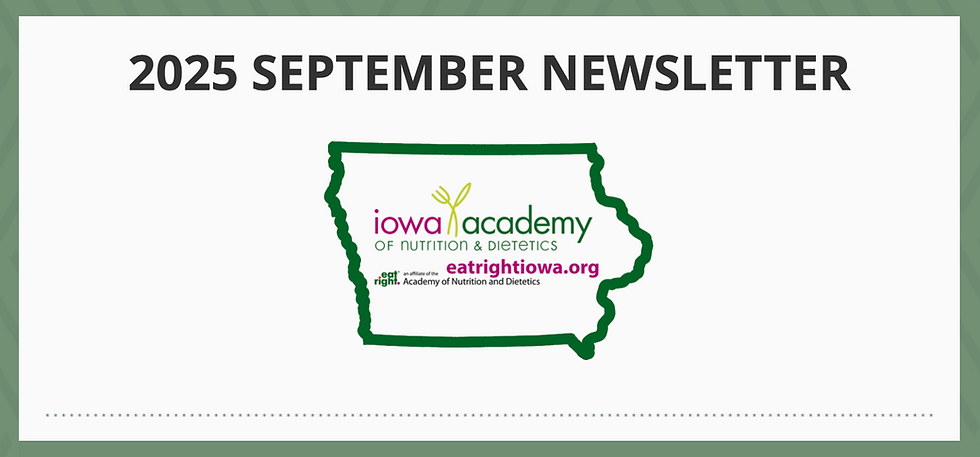Liver Awareness Month
- eatrightiowa
- Oct 20, 2020
- 3 min read

The liver is the largest single organ in the body and one of the hardest working ones at that. The most well-known function of the liver is its ability to filter or detoxify the blood. Other important functions include the production of proteins for blood clotting, bile to digest fats in the small intestine, and cholesterol necessary for cell membrane structure and the synthesis of hormones and Vitamin D. The liver can also convert excess glucose into glycogen for storage, which can later be converted back to glucose when needed by the body.
According to the CDC, 3.9 million Americans have liver disease. There are different types of liver disease but no matter the cause behind it, the progression is likely the same. Excessive alcohol intake, obesity, autoimmune diseases, excessive use of OTC medications/supplements, and viruses (Hepatitis A, B, and C) all increase one's risk.
In the early stages of liver disease inflammation is present. At this point if diagnosed and treated early, the inflammation may subside or even go away all together. The liver is an amazing organ in the fact that only 10-20% is needed for survival. When damaged, the liver can regenerate to its original size. However, If the liver continues to experience inflammation and damage, scar tissue develops, and it is no longer able to repair that area of the liver. The continued buildup of scar tissue can eventually lead to cirrhosis, the end stage for any chronic liver disease. Symptoms of cirrhosis include ascites (buildup of fluid in the abdomen), jaundice, and hepatic encephalopathy (a loss of brain functioning due to the liver’s inability to remove toxins).
RDNs play a vital role in the management of liver disease, as roughly 20-60% of patients diagnosed with cirrhosis experience malnutrition. Malnutrition as defined by the American Society for Parenteral and Enteral Nutrition (ASPEN) is “an acute, subacute or chronic state of nutrition, in which a combination of varying degrees of overnutrition or undernutrition with or without inflammatory activity have led to a change in body composition and diminished function”. Malnutrition can be a result of poor appetite, unpalatable bland diet orders, nausea and vomiting, ascites which may contribute to early satiety, malabsorption, and decreased utilization of nutrients by the body. A Registered Dietitian uses medical nutrition therapy (MNT) to improve the quality of life for patients diagnosed with cirrhosis. The parameters assessed when caring for a patient diagnosed with liver disease are body composition changes, dietary intake, the body’s ability to excrete waste, physical examination to assess for muscle and fat loss, and laboratory values. Early assessment and nutrition interventions are vital to improve clinical outcomes and quality of life. The first priority in MNT for cirrhosis is ensuring patients are receiving adequate calories to prevent weight loss in normal weight and overweight/obese individuals. Along with adequate energy intake, protein intake is important to prevent the loss of lean body mass and to avoid amino acid deficiencies which can complicate patient cares. If individuals are unable to meet their estimated energy needs by mouth, enteral nutrition via a nasogastric tube (NG) may be warranted.
Not only do RDNs provide care for patients diagnosed with liver disease, but they also play a key role in prevention. As previously noted above, practicing a healthier lifestyle may reduce one's risk of liver dysfunction and disease. Dietitians encourage individuals daily to maintain a healthy weight, consume a balanced diet, exercise, and to practice food safety. In conclusion, Dietitians work as part of a multidisciplinary team using their MNT skills to help prevent and treat individuals with liver disease.
Blog written by Morgan Pavon, RD, LD.












Comments